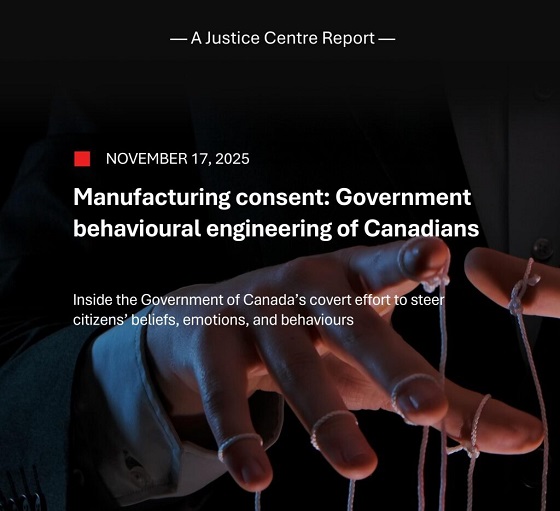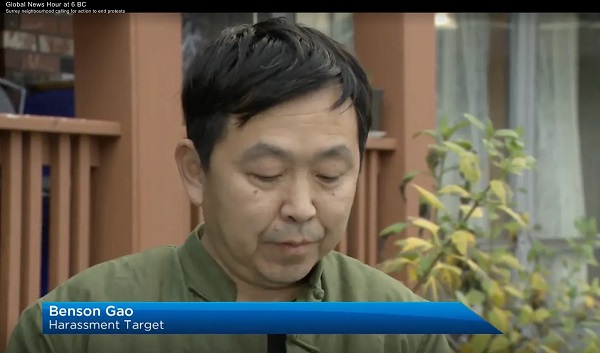Alberta
RDC and Alberta Colleges supporting soldiers

From RDC Communications
RDC joins Colleges Alberta partnership supporting reservists
A group of 12 Alberta post-secondary institutions have signed a memorandum of understanding supporting Canadian Armed Forces (CAF) Reservists who are college employees or students.

The services of Canadian Reservists may be required by the Department of National Defence while having work or study commitments at RDC, or partnered colleges. Leave may be granted under this memorandum, securing their employment and accommodating their studies until they return.
“It is really important if Reservists get called to duty, or have opportunities to train, our institutions support them,” says Joel Ward, RDC President & CEO, on behalf of Colleges Alberta. “There were some formal policies in place but we decided as a group of Alberta colleges to make a strong statement through a MOU, supporting Reservists in our institutions, whether they are students or employees.”
Of the approximately 90,000 dedicated men and women serving in the Canadian Armed Forces, 26,000 are Reservists. About 30 per cent of those Reservists are students. As needed, several accommodations will be available for these learners. Tests and assignments can be rescheduled, and a program may be deferred during a lengthy deployment.
As Commander of 41 Canadian Brigade Group (41 CBG), Colonel Eppo van Weelderen, recognizes the importance and value of this formal agreement. “This collaboration among the Alberta colleges is paramount to continue the development of educated, hard-working and strong leaders for Canada,” he says. “This will help provide the necessary supports to our soldiers as they fulfill their duties serving our nation, in our communities and abroad.”
Forty-one CBG is one of three Army Reserve formations within 3rd Canadian Division. Made up of nine units and a brigade headquarters in Calgary, 41 CBG has seen the number of reserve soldiers increase by nearly 10 per cent the past two years, to approximately 1,600 reserve soldiers garrisoned in Calgary, Edmonton, Lethbridge, Medicine Hat, Red Deer and Yellowknife. Ninety per cent of the soldiers serve part-time.
Carolyn Patton, Alberta Chair of Canadian Forces Liaison Council, views the agreement as mutually advantageous. “This memorandum strengthens the relationship and provides benefits to both parties,” she says. “While serving our country, the Reservists will be able to focus on their duties, and share their skills, knowledge and experiences when they return to their college settings, and communities.”
Maria Anderson, RDC Technician Parts Instructor, has taught at Red Deer College since 2013. She has previously been granted leave by RDC to fulfill her duties as a Reservist. The support from RDC, along with this formal agreement accommodating all Reservists in this group of Alberta colleges, will allow for future development.
“I am grateful to have an employer who encourages my career in the Canadian Army Reserves,” says Anderson. “Knowing that I am supported if I have an opportunity for military training allows me to grow professionally and personally, in ways that benefit my whole community.”
The Reservists’ diverse skillsets provide tremendous value to colleges, and beyond. “The leadership and skills that are developed through military training produces strong employees and students at Red Deer College, and their work benefits the citizens of Canada in many ways,” says Ward. “Reservists are used, not just overseas in combat missions, but also in civil emergencies. Whether it was the ice storm that was in Quebec, or floods, the Reservists are the first to be called so we need to support them.”
To join the Canadian Reserve, contact the nearest armoury in your community. For more information and a list of units in your region, visit the Canadian Army Reserve online.
About Canadian Forces Liaison Council: Canadian Forces Liaison Council is a group of more than two hundred Canada-wide senior business executives and educational leaders, a full-time Secretariat and a national network of Reserve officers. The civilians volunteer their time and efforts to promote the primary Reserve Force by highlighting the benefits of Reserve Force training and experience to the civilian workplace. They also support individual Reservists as well as Reserve units in matters related to employer support. The Council’s mandate is to enhance the availability of Reservists for their military duties by obtaining the support and co-operation of organization leaders in Canada. The Council encourages civilian employers and educational institutions to grant Reservists time off on a voluntary basis, without penalty, to allow them to participate in their military activities, duties and training.
About RDC: For 55 years, RDC has been proudly serving its learners and communities. The College continues to grow programs, facilities and opportunities as it transitions to become a comprehensive regional teaching university during the next three to five years.
This year, RDC will add seven new programs to more than 100 established programs (including full degrees, certificates, diplomas and skilled trades programs). RDC educates 7,500 full-and part-time credit students and more than 38,000 youth and adult learners in the School of Continuing Education each year. The College is expanding its teaching, learning, athletic and living spaces with the additions of the state-of-the-art Gary W. Harris Canada Games Centre/Centre des Jeux du Canada Gary W. Harris, Alternative Energy Lab and construction of a new Residence which all enhance RDC’s Alternative Energy Initiative. Main campus is strategically situated on 290 acres of Alberta’s natural landscape along Queen Elizabeth II Highway. RDC is also proud to serve its Donald School of Business students housed at a downtown campus, located in the Millennium Centre, in addition to housing teaching and learning space at the Welikoklad Event Centre.
For more information on RDC, please visit: rdc.ab.ca
Alberta
Albertans choose new licence plate design with the “Strong and Free” motto

First new plate in 40 years hit the road in 2026.
Albertans have chosen beautiful Moraine Lake in Banff National Park as the new design for the province’s licence plate.
After three rounds of voting and more than 240,000 votes cast, Albertans have spoken. The iconic Moraine Lake in Banff National Park will be featured on the province’s new licence plate.
Available in mid-2026, echoing the “Strong and Free” motto of our province, the plate reflects Alberta’s bold identity, economic strength and deep-rooted provincial pride. The motto’s inclusion on the licence plates will also serve as a nod to Canada’s national anthem and Alberta’s position as a strong and sovereign province within a united Canada.
“Albertans know who we are and what we stand for: we are strong, free, resilient and united by the natural beauty that defines our home. Moraine Lake is recognized around the world, and the fact that Albertans chose it makes this new plate deeply meaningful. Thank you to the Albertans who cast more than 240,000 votes and helped choose a design that showcases Alberta’s natural beauty and will stand as a proud symbol of our province for years to come.”
Moraine Lake is one of Alberta’s most iconic destinations, making it fitting that it be on the province’s licence plates for motorists around the country to see. The licence plate depicts the breathtaking panoramic view of Moraine Lake that perfectly displays the province’s beautiful Rocky Mountains, which attract visitors from around the world to Alberta.
“Having the iconic Moraine Lake on our licence plates is something we can all be proud to show off. Thank you to every Albertan who cast their vote in our tournament. Because of you, the beauty and strong and free spirit of our province will be on display for motorists across the country.”
If an Albertan wants to replace their current plate for the new licence plate once it is released, they can voluntarily pay a $28 fee. Alternatively, Albertans could obtain a new plate on their vehicle registration renewal date at no additional cost. Motorists may also continue using the previous licence plate once the new licence plate is brought onboard, provided it is still in good condition.
Quick facts
- Alberta’s current licence plate was designed in 1984.
- In 2021, Alberta began a transition from painted to reflective plates with the same design.
- The new design incorporates reflective technology to improve readability for law enforcement and automated systems in low-light conditions, and to meet international standards for visibility, legibility and counterfeit resistance.
Alberta
Edmonton and Red Deer to Host 2027 IIHF World Junior Hockey Championship

News release from the Red Deer Rebels and Hockey Canada
Hockey Canada, in partnership with the Canadian Hockey League (CHL) and International Ice Hockey Federation (IIHF), has announced that the 2027 IIHF World Junior Championship will be played in Edmonton and Red Deer, Alberta, from Dec. 26, 2026 to Jan. 5, 2027.
The successful bid represents a partnership between OEG Sports & Entertainment, the Red Deer Rebels, Hockey Alberta, the Cities of Edmonton and Red Deer, and the Province of Alberta, which made an $11 million commitment in February 2024 to host events in communities throughout the province.
“We are excited to bring the IIHF World Junior Championship back to Edmonton and Red Deer, and to give hockey fans in Alberta and across the country the opportunity to watch the top under-20 players compete for a gold medal right here in Canada,” said Dean McIntosh, senior vice-president of revenue, fan experience and community impact with Hockey Canada. “Both cities have been successful hosts of IIHF and other high-profile international events, and we know our partners in Edmonton and Red Deer will host a world-class event for players, teams, fans and volunteers alike.”
The 18,500-seat Rogers Place, home of the National Hockey League’s Edmonton Oilers and Western Hockey League’s Edmonton Oil Kings, will serve as the primary competition venue and host 17 games, including both semifinals and the medal games. The additional 14 games are set for the 7,050-seat Marchant Crane Centrium, home of the WHL’s Red Deer Rebels.
“Alberta is ready to welcome visitors from around the world for the International Ice Hockey Federation World Junior Championship,” said Andrew Boitchenko, minister of tourism and sport for Alberta. “This event celebrates the spirit of international competition and our province’s passion for hockey, while showcasing Alberta as a world-class destination for sporting events.”
“Edmonton is thrilled to co-host the IIHF World Junior Championship. This tournament is a fantastic opportunity to watch the world’s best junior hockey players right here in our community, showcasing emerging talent and inspiring a new generation of athletes,” said Andrew Knack, mayor of Edmonton. “Hosting world-calibre events like this also injects vital tourism dollars into our local economy, boosts our city’s vibrancy, and solidifies Edmonton’s reputation as a premiere sports tourism destination.”
Edmonton last hosted the IIHF World Junior Championship in August 2022, which was rescheduled from its traditional winter slot due to the COVID-19 pandemic. The gold medal game at the 2022 event was an instant classic, with Mason McTavish making a game-saving play in overtime and Kent Johnson netting the game-winner just over a minute later to give Canada its 19th World Juniors gold medal. The city also hosted in 2021 without fans, and was a co-host with Calgary for the 2012 edition of the event. Red Deer was a co-host for the cancelled 2022 World Juniors, and first hosted the annual under-20 tournament in 1995.
“We are proud to welcome the 2027 IIHF World Junior Championship back to our region,” said Jesse Smith, chief executive officer of Tourism Red Deer. “Red Deer’s love for the game and our hospitality will ensure an unforgettable experience for every athlete and fan.”
“The World Juniors give Edmonton an extraordinary opportunity to showcase our city on the world stage,” said Arlindo Gomes, vice-president of business development and venues management with Explore Edmonton. “This event strengthens our global reputation as a premier international sport destination while delivering more than $90 million in total economic impact to our community and inspiring the next generation of hockey players and fans. Edmonton loves hockey and we cannot wait to welcome global athletes and fans.”
Pre-tournament games for the 2027 World Juniors are expected to take place throughout Alberta, allowing fans across the province to watch the best junior hockey players from 10 countries before the puck officially drops in Edmonton and Red Deer on Boxing Day.
With demand for tickets expected to exceed availability, more information about a priority ticket draw and tournament ticket packages will be announced in the coming months. Fans looking to receive updates about the 2027 IIHF World Junior Championship as soon as they become available can sign up to become a Hockey Canada Insider today.
“On behalf of all of us at OEG Sports & Entertainment, we are proud to once again be hosting the IIHF World Junior Championship and the best young stars on the planet,” said Stu Ballantyne, president and chief operating officer of Rogers Place and ICE District. “The World Juniors is one of the most celebrated tournaments in hockey, and bringing it back to Edmonton is an honour for our city, our fans and our entire organization. ICE District and Rogers Place were built to facilitate and showcase the very best in sport and entertainment, and we look forward to working closely with Hockey Canada and other partners to deliver an unforgettable experience for the athletes, fans and the global hockey community.”
“We are beyond excited for our fans, partners and community to once again welcome the hockey world to Red Deer,” said Merrick Sutter, senior vice-president of the Red Deer Rebels. “This is a community that loves events, and we know their passion will be on full display once again next December.”
For more information on Hockey Canada and the 2027 IIHF World Junior Championship, please visit HockeyCanada.ca, or follow along through social media on Facebook, X, Instagram and TikTok.
-

 Alberta1 day ago
Alberta1 day agoNational Crisis Approaching Due To The Carney Government’s Centrally Planned Green Economy
-

 Alberta1 day ago
Alberta1 day agoCalgary mayor should retain ‘blanket rezoning’ for sake of Calgarian families
-

 Alberta1 day ago
Alberta1 day agoAlberta Offers Enormous Advantages for AI Data Centres
-

 Bruce Dowbiggin1 day ago
Bruce Dowbiggin1 day agoSports 50/50 Draws: Make Sure You Read The Small Print
-

 COVID-191 day ago
COVID-191 day agoNew report warns Ottawa’s ‘nudge’ unit erodes democracy and public trust
-

 Censorship Industrial Complex1 day ago
Censorship Industrial Complex1 day agoQuebec City faces lawsuit after cancelling Christian event over “controversial” artist
-

 espionage1 day ago
espionage1 day agoTrump says release the Epstein files
-

 Carbon Tax9 hours ago
Carbon Tax9 hours agoCarney fails to undo Trudeau’s devastating energy policies







